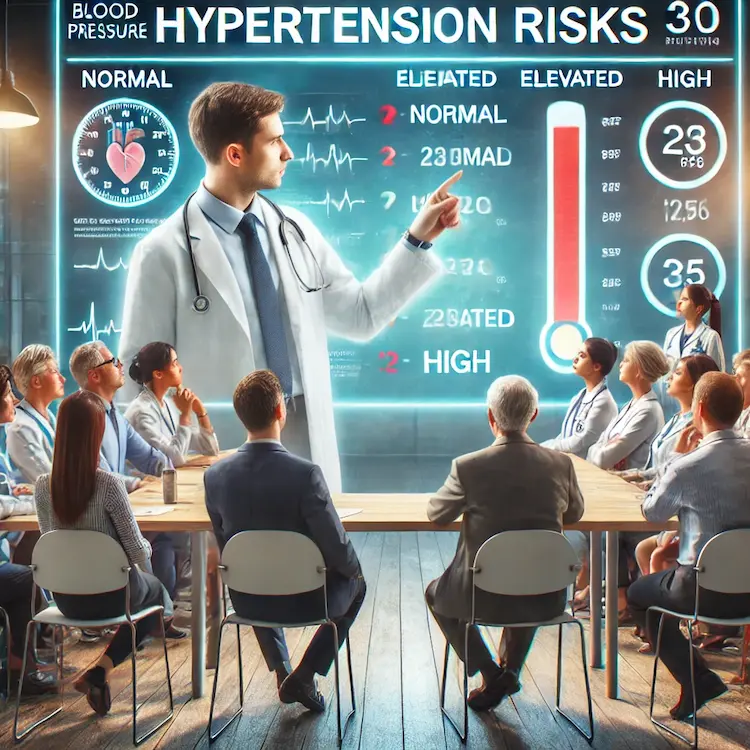Hypertension, or high blood pressure, is a silent killer that often goes unnoticed until it leads to severe health complications like heart disease, stroke, and kidney failure. Early detection is crucial in preventing these outcomes, and advanced blood pressure monitoring tools like Sphyg play a vital role in identifying and managing hypertension before it causes irreversible damage.
This article explores why early detection of hypertension matters, the impact of delayed diagnosis, and the effectiveness of various monitoring methods. We’ll also compare different blood pressure measurement tools, discuss practical steps for managing hypertension, and provide actionable recommendations.
Hypertension occurs when the force of blood against artery walls remains consistently high. It is classified into two types:
Hypertension rarely presents symptoms in its early stages, allowing it to progress unnoticed. By the time symptoms appear—such as headaches, dizziness, or nosebleeds—serious damage may have already occurred. This makes regular blood pressure monitoring essential.

Detecting hypertension early allows for timely intervention, reducing the risk of severe complications. The benefits of early detection include:
Reduced Risk of Cardiovascular Disease – Proper management lowers the chances of heart attacks, strokes, and heart failure.
Lower Healthcare Costs – Early diagnosis prevents expensive treatments for advanced heart and kidney diseases.
Improved Quality of Life – Keeping blood pressure under control minimizes fatigue, headaches, and stress-related symptoms.
Better Medication Management – Early monitoring helps identify the most effective medications and lifestyle adjustments.
Heart Failure & Stroke – High blood pressure forces the heart to work harder, leading to heart failure. It also damages arteries, increasing stroke risk.
Kidney Damage – Hypertension narrows and weakens kidney blood vessels, leading to renal failure.
Cognitive Decline – Long-term hypertension is linked to dementia and memory loss.
There are different ways to measure blood pressure, each with its pros and cons. Below is a comparison:
| Method | How It Works | Pros | Cons |
|---|---|---|---|
| Oscillometric Monitors (e.g., Sphyg devices) | Measures vibrations in arterial walls | Accurate, user-friendly, suitable for home use | May be less reliable for arrhythmias |
| Aneroid (Manual) Sphygmomanometers | Uses a cuff and stethoscope to detect Korotkoff sounds | Gold standard in clinical settings, precise readings | Requires training, not practical for self-monitoring |
| Mercury Sphygmomanometers | Mercury column rises in response to pressure changes | Most accurate, used in medical research | Risk of mercury exposure, bulky |
| Wrist Monitors | Detects blood pressure at the wrist | Compact, convenient for travel | Less accurate due to arm positioning errors |
| Wearable Blood Pressure Monitors | Uses sensors for continuous tracking | Real-time monitoring, good for detecting fluctuations | Expensive, limited clinical validation |
Sphyg devices, especially oscillometric digital monitors, strike a balance between accuracy and ease of use. They are:

Monitoring blood pressure alone is not enough—proper management is essential.
Sit in a relaxed position with your back supported.
Place the cuff on your upper arm, at heart level.
Avoid caffeine, smoking, and exercise for 30 minutes before measuring.
Take multiple readings and record the average.
Maintain a Healthy Diet – Eat potassium-rich foods (bananas, spinach) and reduce salt intake.
Exercise Regularly – Engage in 30 minutes of moderate exercise at least 5 days a week.
Manage Stress – Practice deep breathing, yoga, or meditation.
Monitor Blood Pressure Regularly – Use a reliable device like Sphyg.
Limit Alcohol & Caffeine – Both can elevate blood pressure when consumed excessively.
If your blood pressure is consistently above 140/90 mmHg or if you experience symptoms like chest pain, vision problems, or severe headaches, consult a doctor immediately.
Early detection of hypertension is essential for preventing life-threatening complications. With the right tools like Sphyg blood pressure monitors, individuals can regularly track their blood pressure, detect issues early, and take proactive measures to maintain heart health. Combining self-monitoring with a healthy lifestyle significantly reduces the risk of cardiovascular diseases.
Hypertension is a silent killer affecting over 1 billion people worldwide.
Early detection through regular monitoring can prevent severe complications.
Sphyg oscillometric devices provide accurate, easy-to-use home monitoring.
Lifestyle changes like diet, exercise, and stress management help control blood pressure.
Consistent monitoring and medical check-ups ensure long-term heart health.
Check your blood pressure regularly using a clinically validated device.
Follow a heart-healthy diet with less sodium and more potassium-rich foods.
Engage in physical activity daily to improve cardiovascular health.
Consult a doctor if your readings are consistently high.
Invest in a reliable Sphyg monitor for easy and accurate home tracking.